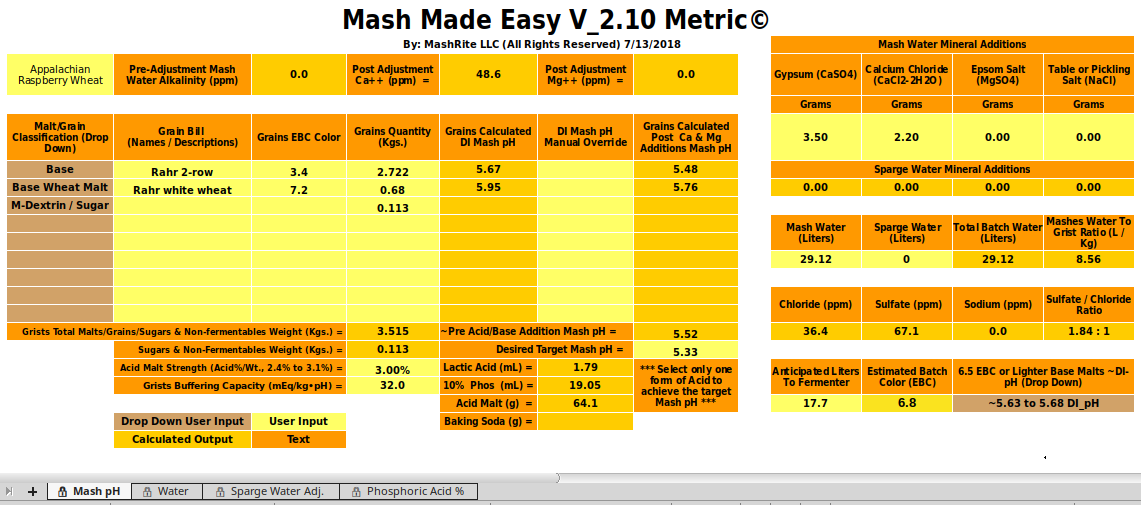It appears that for my next upgrade I should offer a drop down selector for low Lovibond (low EBC) color base malts which falls within a DI_pH range of 5.58 to 5.63. And also one which spans from 5.53 to 5.58. These would "perhaps" better accommodate malts the likes of Rahr 2-Row and also Briess 2-Row Brewers. The latter for which generally appears to hover at around an average of ~5.57 DI_pH per some (ever aging) Briess data which I have on hand. As opposed to Briess Pilsen malt which can fall into the general DI_pH range of ~5.8 (give or take a bit).
Perhaps a broad and sweeping generalization can be made that the most common of the North American sourced 2-Row brewer malt types will often hover generally within a lower DI_pH (and thereby higher acidity) range than do many of the UK or European 2-Row offerings. And also that "in general" (regardless of their source nation) Pilsner malts will typically fall within the very highest range of DI_pH's, and "Pale" classed base malts will generally fall in-between the witnessed lows for brewers malt and highs for Pilsner malts, and fall within perhaps a general 5.68 to 5.77 pH range. But in the end all of this is merely generalizations, and exceptions (some seasonal, local, regional, or national) from generalizations for any types or sources of base malts can and will broadly occur.
The impact to both a softwares output validity and the end users real world need to acidify more or less than the output of said software can (as seen, and as is being discussed here) be huge, as any of such software simply can not know the true measured DI_pH for your recipes primary low colored base malt(s) (or for that matter, any other of your recipes malts) unless you actually test them, or unless the manufacturer actually provides this information. Software can only respond to its programmed generalizations, unless perhaps for the case wherein it provides for manual DI_pH override. And even for this case the software is still making generalizations.




















![Craft A Brew - Safale S-04 Dry Yeast - Fermentis - English Ale Dry Yeast - For English and American Ales and Hard Apple Ciders - Ingredients for Home Brewing - Beer Making Supplies - [1 Pack]](https://m.media-amazon.com/images/I/41fVGNh6JfL._SL500_.jpg)





































